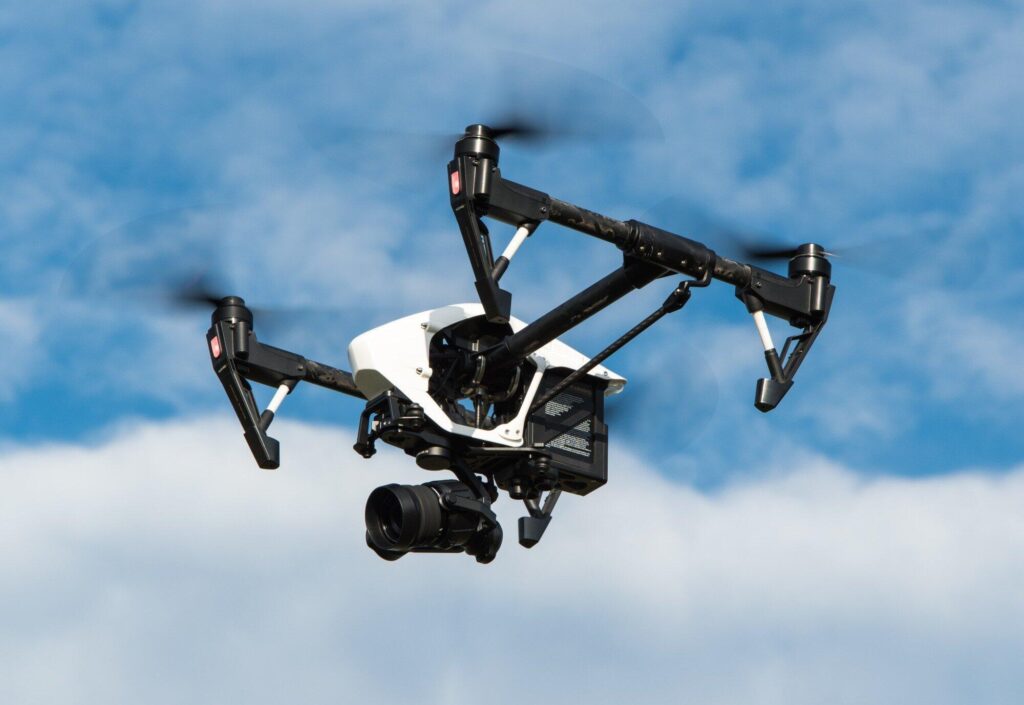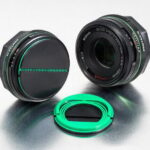Just like any tech gadget, your drone needs regular upkeep to stay in top shape. Drones are intricate machines that need some TLC to work well and safely.
In this article, we’ll dive into why keeping up with drone repair and maintenance is crucial for your drone’s performance and longevity. Let’s get your drone flying smoothly!
Importance of Regular Maintenance
Now that we’ve discussed some common causes of drone damage, let’s explore why regular drone repair and maintenance is essential for keeping your drone in top condition.
Safety
Regular maintenance helps find problems like worn-out parts, motor issues, or battery failures that could cause accidents during flight. Keeping all parts working well lowers the chance of crashes.
For commercial drone operators, regular maintenance is also important for following safety rules. This cuts down on legal risks if accidents happen.
Enhanced Performance
Routine check-ups help drones, including popular models like a DJI drone, maintain stable and efficient flight. These checkups include propeller balancing, motor tuning, and calibration.
Also, batteries degrade over time. Regular maintenance and battery testing can help prevent unexpected power loss and extend battery life.
Cost Efficiency
Regular maintenance helps stop small problems from turning into big, costly ones. By fixing minor issues quickly, you can prevent more expensive damage or crashes that come from ignoring upkeep. Plus, taking care of your drone can make it last longer and save you money by reducing the need for replacements.
Increases Longevity
Regular drone maintenance can help it last longer. Frequent use can cause wear and tear on parts. By fixing these issues with maintenance, you can keep your drone working well for a longer time.
Compliance with Regulations
In some countries, drones must follow certain rules and laws. Keeping up with regular maintenance helps make sure your drone meets these rules, which can prevent legal problems. Many insurance companies and professional groups also ask for proof of regular maintenance to offer coverage and certifications.
Improved Data Accuracy
For drones used in mapping, surveying, or data collection, regular maintenance is very important for getting accurate and reliable data. Any problems or mistakes in the drone’s systems can lead to bad data, hurting its quality and usefulness.
Resale Value
If you plan to upgrade or sell your drone later, regular maintenance can really help its resale value. A drone that is well cared for will be worth more than one that has been ignored, making it a smart investment.
Causes of Drone Damage
Before we dive into the importance of regular maintenance, let’s first discuss some common causes of drone damage. These can include:
Crashes
One common cause of drone damage is crashing. Crashes can happen because of user mistakes or technical problems. They can lead to broken propellers, damaged motors, and other internal issues.
Wear and tear
As with any machine, frequent use can lead to wear and tear on your drone’s components. This can cause degraded performance or even complete breakdown if not addressed.
Environmental factors
Drones are commonly used outside where they face tough weather like rain, wind, and extreme temperatures. These conditions can harm the outer shell and delicate electronics of your drone over time.
Battery Issues
Batteries are important parts of drones. As they get older, they can work worse. This may lead to shorter flight times and sudden power loss.
Motor Wear and Tear
Drone motors work hard to keep the drone aloft, and over time they can wear out or become misaligned. This can result in reduced flight stability and potentially lead to crashes.
Propeller Damage
Over time, propellers naturally wear out, especially when flying in dusty or sandy conditions. Damaged or unbalanced propellers can cause instability during flight.
Software or Firmware Issues
Software or firmware glitches can cause unexpected malfunctions in your drone’s flight control system. Regular updates and maintenance can help prevent these issues.
GPS and Signal Interference
Interference from other electronic devices or environmental factors can disrupt your drone’s GPS and signal, causing it to lose its position or ability to communicate with the controller.
Improper Storage and Transport
Improperly storing or transporting your drone can lead to physical damage, especially during travel. It’s essential to use a sturdy and protective case to prevent any potential accidents.
Overloading or Improper Payload Distribution
It’s important to follow the weight and payload limits specified by your drone’s manufacturer. Overloading or improper distribution of weight can strain the motors and cause damage to your drone during flight.
Manufacturing Defects
In some cases, drones may have manufacturing defects that can lead to malfunctions or accidents. Regular maintenance can help identify and address these issues before they cause any damage.
Tips for Maintaining Your Drone
Now that we understand the importance of regular maintenance let’s discuss some tips for keeping your drone in top shape:
Follow the Manufacturer’s Guidelines
The first step in maintaining your drone is to follow the manufacturer’s guidelines for upkeep and maintenance. This can include recommended schedules for battery charging, motor tuning, and overall checkups.
Conduct Pre-Flight Checks
Before each flight, conduct a thorough pre-flight check of your drone. This includes inspecting all components for any damage or wear and tear, ensuring batteries are fully charged, and calibrating instruments if needed.
Clean Your Drone After Use
After each use, clean your drone’s exterior using a soft cloth and mild cleaning solution. This will help prevent dirt buildup that can lead to damage over time.
Store Properly
When not in use, store your drone in a dry, cool place to prevent damage from environmental factors. Consider investing in a protective case or bag to keep it safe during transport.
Address Issues Promptly
If you notice any issues during maintenance or pre-flight checks, address them promptly. Don’t ignore small problems as they can lead to more significant damages if left unattended.
Pre-Flight Maintenance Checklist for Drones
To help you stay on top of your drone’s maintenance, here is a pre-flight checklist that you can follow:
Visual Inspection
Check for any physical damage or wear and tear on the exterior of your drone, and inspect the propellers for any cracks, chips, or imbalances. Additionally, ensure that all screws are securely tightened to maintain optimal performance.
Propeller and Motor Check
Balance your propellers and check for any signs of wear on the motors. Replace worn-out or damaged propellers and have motors tuned or replaced if necessary.
Battery Inspection and Testing
Inspect your batteries for any physical damage, and test them to ensure they hold a charge and deliver power consistently. If you notice any issues, consider replacing the battery.
Gimbal and Camera Check
If your drone has a gimbal and camera, conduct a visual inspection to ensure they are in good condition. Check for any damage or misalignment that could affect their performance.
Firmware and Software Updates
Regularly check for firmware and software updates for your drone, and make sure to install them as needed. This will ensure that your drone is running on the latest version and minimize any potential issues.
Remote Controller Check
Inspect your remote controller for any damage or wear and tear, and make sure all buttons and controls are functioning correctly.
Signal and GPS Check
Before each flight, check the signal and GPS connection of your drone to ensure they are working correctly. If you notice any issues, troubleshoot them before taking off.
Payload and Accessories Check
If you use accessories or attach a payload to your drone, make sure they are securely attached and within the weight limit specified by the manufacturer.
Post-Flight Maintenance Checklist for Drones
Drone repair and maintenance doesn’t end when your flight is over. Here’s a post-flight checklist to keep in mind:
Battery Care
Follow the manufacturer’s guidelines for charging and storing your drone’s batteries to ensure their longevity and performance. Avoid overcharging or leaving them in extreme temperatures.
Propeller Cleaning
Regularly clean your propellers to remove any dirt or debris that can affect their performance. Consider using compressed air or a soft cloth and mild cleaner to gently wipe them down.
Drone Body and Motor Cleaning
Clean the body and motors of your drone with a soft cloth and mild cleaner to remove any dirt or debris that can affect their performance. Avoid using harsh chemicals or water.
Flight and Data Logs
Keep a record of your drone’s flights and any data collected during missions. This can help identify potential issues and track the performance of your drone over time.
Camera and Gimbal Care
If your drone has a camera and gimbal, make sure to clean them regularly using a soft cloth or specialized cleaning solution. Avoid touching the lens with your fingers to prevent smudges and potential damage.
Routine Maintenance Checklist for Drones
Drone repairs and maintenance should also be scheduled on a routine basis. Here’s a general checklist to follow:
Motor Maintenance
Check for any signs of wear and tear on your drone’s motors, and have them tuned or replaced as needed. This will ensure that they are functioning correctly and prolong their lifespan.
Propeller Replacement
Replace worn-out or damaged propellers regularly to maintain the stability and maneuverability of your drone during flights.
Battery Health Check
Conduct regular battery tests to ensure they are functioning correctly and holding a charge. If you notice any issues, consider replacing the battery.
Calibration
Calibrate your drone’s instruments regularly to ensure accurate flight data and control. Follow the manufacturer’s guidelines for calibration procedures.
Software Updates
Make sure to check for software updates for your drone regularly. It’s important to install these updates whenever necessary. Keeping your drone up to date ensures that it runs on the latest version, which helps improve its performance and functionality.
Spare Parts and Accessories Check
If you use accessories or attach a payload to your drone, regularly check for any damage or wear and tear. Keep spare parts on hand in case of emergency replacements.
Choosing the Right Drone Maintenance Service
If you’re not comfortable performing maintenance on your own, or if your drone requires more complex repairs, consider hiring a drone expert. Here are some factors to consider when choosing the right service:
Experience and Expertise
Look for a service provider with years of experience in maintaining and repairing different drone types. They should also have trained technicians who specialize in various types of drones.
Range of Services
Choose a maintenance service that offers a wide range of services. This can include comprehensive repair services, routine maintenance, and specialized services. This will ensure that they can handle any issues that may arise with your drone.
Turnaround Time
Consider the turnaround time for repairs and maintenance. Choose a service provider that can quickly address any issues to minimize disruption to your drone operations.
Customer Reviews and Recommendations
Do some research and read reviews from previous customers to get an idea of their experiences with the maintenance service. You can also ask for recommendations from other drone owners or professionals in the industry.
Quality Parts and Tools
The maintenance service should use high-quality parts and tools for repairs and replacements. Ask about their sourcing and quality control processes to ensure that your drone is in good hands.
Diagnostic Capabilities
Choose a maintenance service with advanced diagnostic capabilities to identify and troubleshoot any issues with your drone accurately. This will ensure that the root cause of the problem is addressed, rather than just fixing surface-level symptoms.
Location and Logistics
Consider the location of the maintenance service and logistics involved in transporting your drone to and from their facility. This can affect turnaround time and overall costs.
Service Plans or Contracts
Some maintenance services offer service plans or contracts that include routine maintenance and repairs for a specific period. This can help you save money in the long run and ensure that your drone is well-maintained throughout its lifespan.
Cost Transparency
Make sure the maintenance service provides a transparent breakdown of costs for repairs and services. This will help you budget accordingly and avoid any unexpected fees.
Explore the Importance of Drone Repair with this Guide
Drone repair and maintenance is important for its best performance and safety. By knowing common problems and using maintenance checklists, you can keep your drone in good condition. If needed, think about hiring a pro to fix tough issues or help with regular care. With good maintenance, you can keep flying your drone for many years!
Is this article helpful? Keep reading our blog for more.







